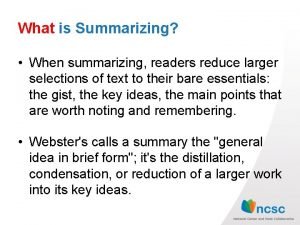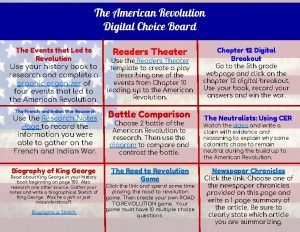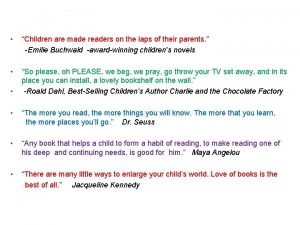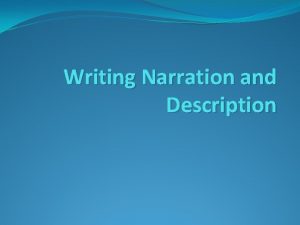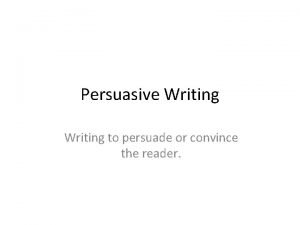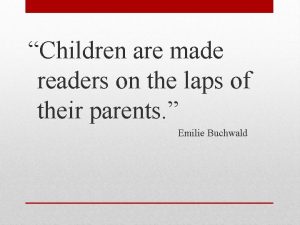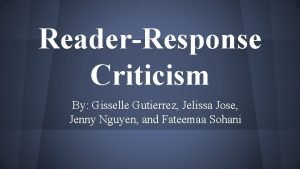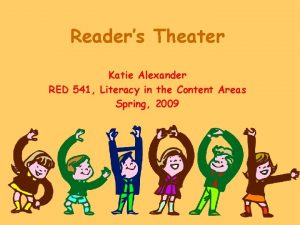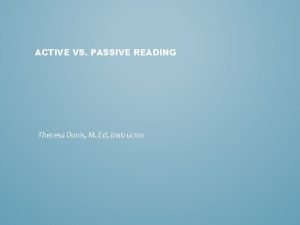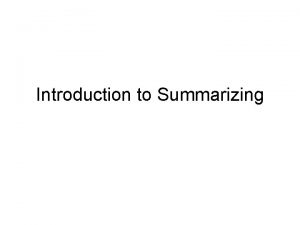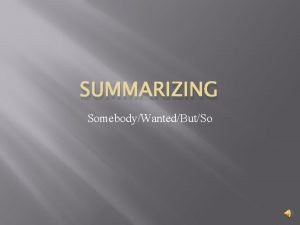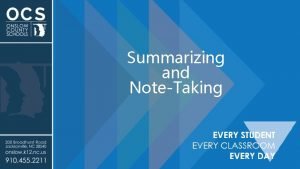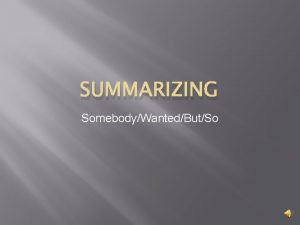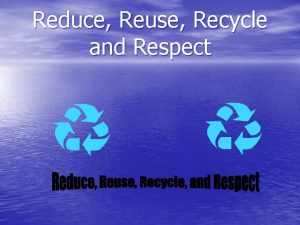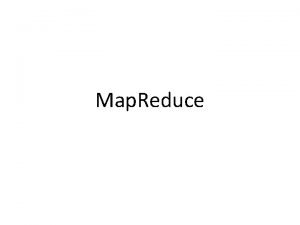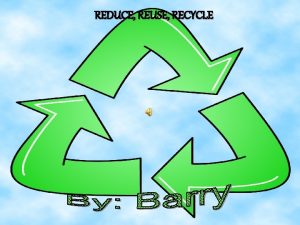What is Summarizing When summarizing readers reduce larger











- Slides: 11

What is Summarizing? • When summarizing, readers reduce larger selections of text to their bare essentials: the gist, the key ideas, the main points that are worth noting and remembering. • Webster's calls a summary the "general idea in brief form"; it's the distillation, condensation, or reduction of a larger work into its key ideas.

Why Summarize? • Important skill for readers of all levels and abilities • Goes beyond retelling to demonstrate strong understanding of the text • Requires readers to comprehend, analyze, and synthesize ideas • Requires a higher level of thinking

How Do Readers Summarize? Good readers… • Reduce the extraneous verbiage and examples. • Focus on the heart of the matter. • Find key words/phrases that capture the main idea of what was read. • Find the main ideas and the essential details that support the main idea.

Strategies for Teaching Summarizing • • Graphic Organizers Headlines GIST SWBST – Somebody, Wanted, But, So, Then

Graphic Organizers • Select key words or phrases to identify the 5 W’s and H: – Who – What – When – Where – Why – How

Headlines • Remove the headlines from articles from the newspaper. Have students practice writing headlines for (or matching the removed headlines to) the appropriate text.

GIST • Write a 20 -word summary of a reading selection by answering the "five Ws and H" questions -- who, what, when, where, why and how. – "Who is the main character of this story? " – "When/where does the story take place? " – "What happened in the story? " – "Why do you think the characters did what they did? " – "How did the character's actions impact the story? "

SWBST: Somebody, Wanted, But, So, Then Read a text and decide… • Who the somebody is (characters) • What that somebody wanted (events in the plot) • But what happened to keep something from happening (conflict or problem) • And so, finally, how everything works out (solutions)

Teaching SWBST: Somebody, Wanted, But, So, Then 1. Model the strategy. Explain the basic definitions for the categories depending on which variation of the chart you are using. 2. Practice using a sample text where you provide students with the information for the Somebody/Someone column. 3. After practicing as a class, allow students to work independently.

Your Turn! Now ask yourself: • What is summarizing? • What are some effective ways to teach students to summarize a text?

Check for Understanding • What is summarizing? – condensation or reduction of a larger work into its key ideas • What are some effective ways to teach students to summarize a text? – Graphic Organizers – Headlines – GIST – SWBST *** Keep in mind there are numerous effective teaching strategies but we just highlighted two here. We encourage you to continue exploring other possible strategies.
 Slidetodoc.com
Slidetodoc.com What is summarizing?
What is summarizing? Revolutionary war choice board
Revolutionary war choice board Children are made readers on the laps of their parents
Children are made readers on the laps of their parents Reader's goal in narration
Reader's goal in narration Writing to convince
Writing to convince Children are made readers on the laps of their parents
Children are made readers on the laps of their parents Persuasive appeals
Persuasive appeals Henry uses a rational argument to convince his readers that
Henry uses a rational argument to convince his readers that Readers response criticism
Readers response criticism Where the wild things are readers theater
Where the wild things are readers theater What is passive reading
What is passive reading

